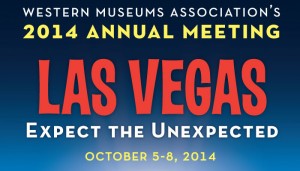By: Suzanne Hilser-Wiles
So many museums suffer what some might consider a “happy problem”—generous support from board members and a robust membership program, but very little philanthropic activity between the two. While board support and a broad-based membership effort are important for the current financial stability of your organization, success in these areas might, in fact, be masking a serious future problem: lack of a true pipeline.
It isn’t difficult to see how this situation arises. Most museums have very small fundraising staffs, so focusing on your most generous donors, very often your trustees, makes perfect sense. At the same time, visible and generous support from a handful of prominent local philanthropists can make some donors feel like their smaller gifts are not as necessary or not as valued by the institution. On the opposite end of the spectrum, the size of a museum’s membership base is often an institutional focus because it tends to drive visitorship and is, itself, an important marker of an institution’s health—the all important “are we growing?” question!
By figuring out ways to grow the pool of donors between membership and board leadership, we are creating not only a pipeline of future prospects for our largest gifts, but also increasing operational support today. So what do we mean when we talk about those donors “in the middle”?
- For some museums, it means Leadership Annual Giving—donors whose annual gift moves beyond the transactional relationship associated with general membership to an investment in the museum and its programs.
- For some museums, it means a major gifts program that allows donors to help off-set the costs of exhibitions and programs with targeted gifts that are smaller than those from lead sponsors.
- For some museums, it means both!
Developing a program for these donors that is manageable for your institution requires thoughtful planning and disciplined execution. Before you get started, here are some things to consider:
- Do we have annual giving levels that inspire people to “move up” from membership?
- Are we using messages about philanthropy, not just about benefits, as we talk to these prospects?
- Have we made these programs simple enough for our staff to manage effectively, but diverse enough to engage a broad spectrum of people?
- Have we designed donor programs that will attract prospects who are likely to stick with us?
- Do we have opportunities for program support that are attractive to prospects?
- Do we have a clearly defined program for recognizing and stewarding these donors?
- Do we have the support of our institutional partners (in the curatorial departments, finance, and marketing and communications) in these efforts?
- Have we developed fundraising opportunities that are budget-relieving?
- Once we identify and engage some of these donors “in the middle,” how will we manage them?
 For a museum fundraising staff that is small, moving beyond managing the board and membership, not to mention an often heavy events schedule (events—that is a topic for another blog post!), can be daunting. Most importantly, I would suggest the need for a thoughtful plan that begins with the goal—what are we trying to accomplish by focusing on these donors—and reflects institutional resources, focus and financial goals. Many museums have done this well (some of which we will hear from at the Western Museums Association 2014 Annual Meeting in Las Vegas), but most would tell you they still see untapped potential in this prospect pool. However, with a careful plan in place, even the smallest staff can grow and diversify its donor base, moving beyond the board and membership to engage donors at all levels.
For a museum fundraising staff that is small, moving beyond managing the board and membership, not to mention an often heavy events schedule (events—that is a topic for another blog post!), can be daunting. Most importantly, I would suggest the need for a thoughtful plan that begins with the goal—what are we trying to accomplish by focusing on these donors—and reflects institutional resources, focus and financial goals. Many museums have done this well (some of which we will hear from at the Western Museums Association 2014 Annual Meeting in Las Vegas), but most would tell you they still see untapped potential in this prospect pool. However, with a careful plan in place, even the smallest staff can grow and diversify its donor base, moving beyond the board and membership to engage donors at all levels.
View the full session description for Building out Your Mid-Level Donor Base
Registration is open for the WMA 2014 Annual Meeting. Register today and join your Western museum colleagues in Las Vegas!
Suzanne Hilser-Wiles is a Vice President at GG+A, where she oversees the firm’s practice area for Arts & Cultural clients and serves on its senior leadership committee. Before joining GG+A, Suzanne served as the Vice Chancellor for Advancement at the University of North Carolina School of the Arts, a free standing, public conservatory. She has held senior fundraising positions at the Metropolitan Museum of Art, the Museum of Modern Art in New York, and CancerCare, a national organization serving people with cancer and their loved ones.








Add new comment